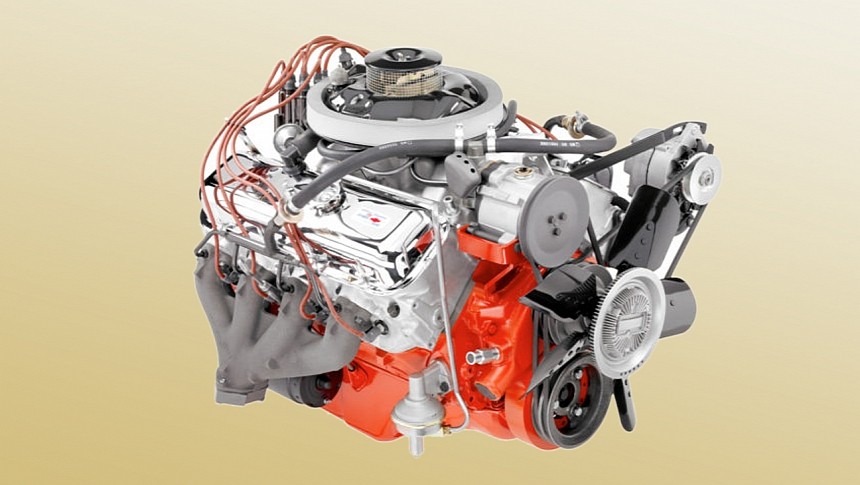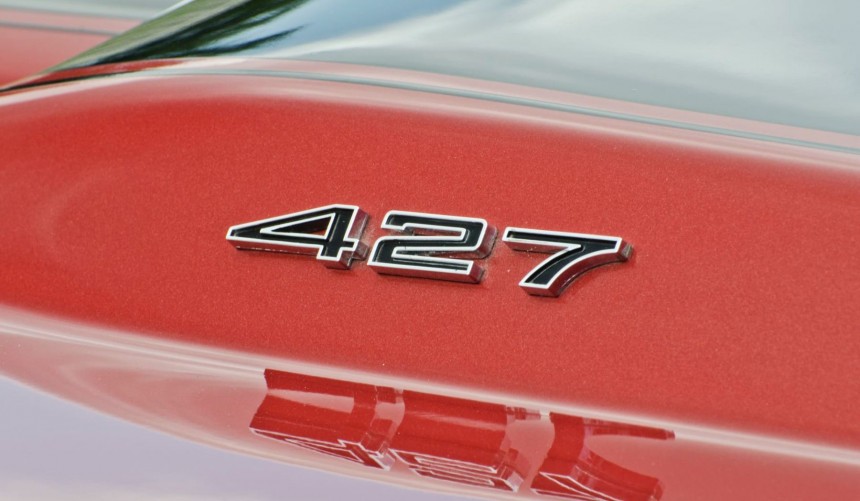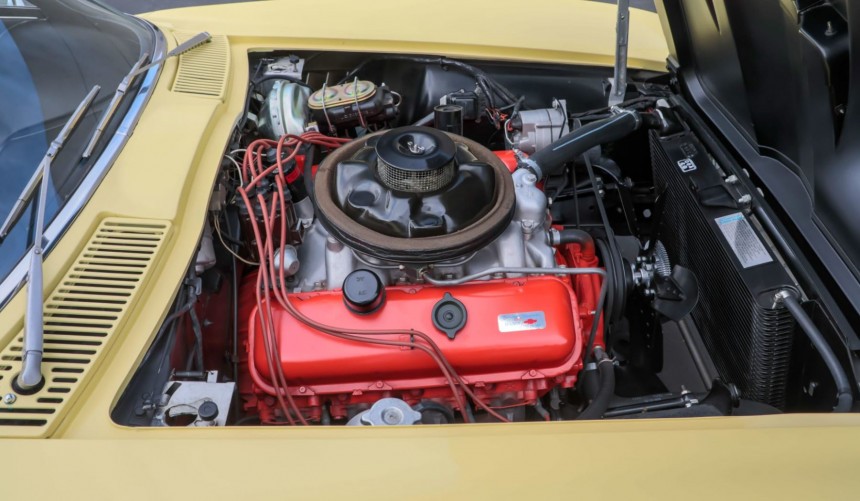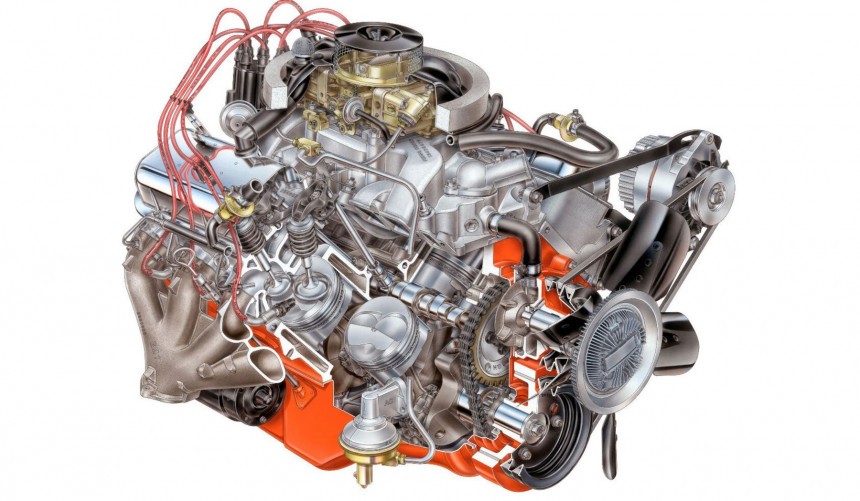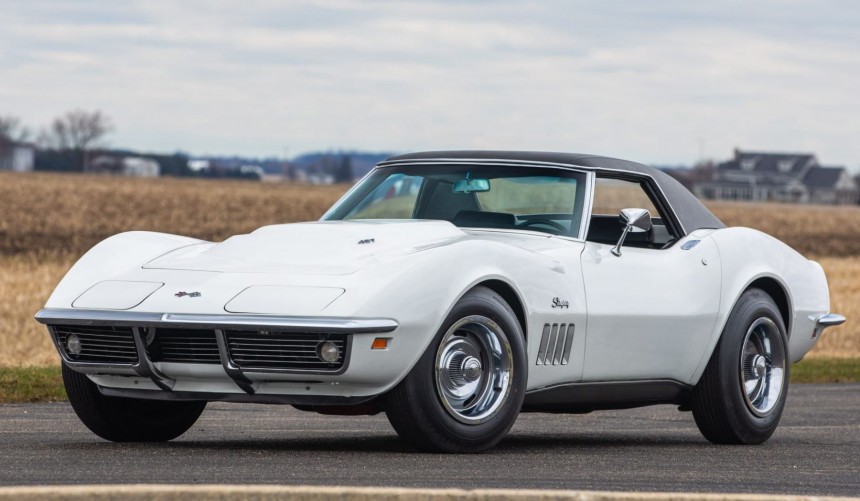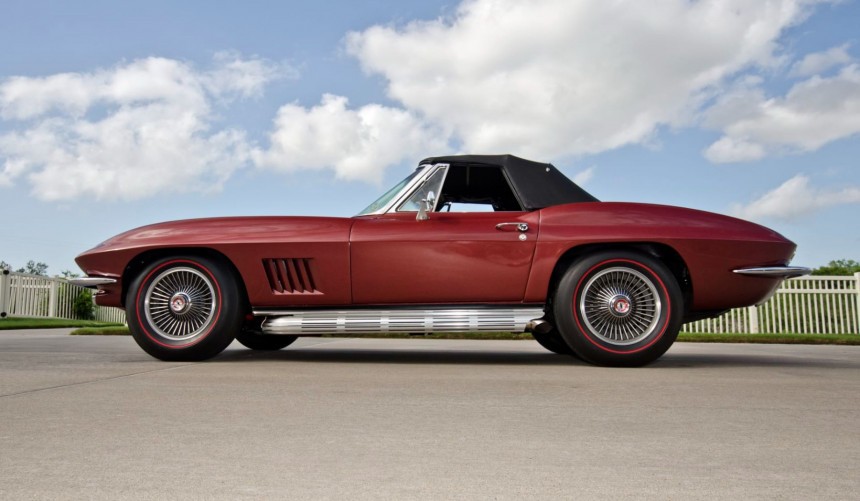Although it's more than half a century old, the L88 remains one of the mightiest V8s that ever powered a Corvette.
For most people, there's nothing more American than apple pie, but for gearheads, there's nothing more American than an old-school high-performance V8.
The American V8 is still around today, but the global shift towards all-electric powertrains puts it on the "critically endangered" list.
The story was much different six decades ago when gas was cheap, a new car was affordable, and the ice caps were melting at a normal pace.
During the 1960s, all American carmakers offered at least one series of V8 engines, and Detroit's Big Three was involved in a heated battle for horsepower dominance.
That battle gave birth to some of the most iconic cars and V8 engines ever produced, like Chevy's series of high-performance big blocks.
By the mid-1950s, it was clear that the GM division needed a larger companion for its new small-block V8 range.
Chevy's brightest engineering minds came together and developed a new 348-ci (5.7-liter) V8 - the first member of the W series of legendary big blocks.
Also known as Mark I, this initial generation also welcomed a 409-ci (6.7-liter) version in 1961, then a race-oriented 427-ci (7.0-liter) a year later.
The architecture was improved in the following years, leading to the Mark IV series appearing in the engine bays of production models in the second part of 1965.
Three more generations followed, with the Vortec 8100 (L18) built from 2001 to 2010, becoming the last big block to power a Chevy production model.
While the Chevy big block family spawned several great V8s throughout its 50-year run, the 427 and 454 high-performance Mark IVs remain the most iconic.
While the latter's LS6 variant made the 1970 Chevelle SS one of the greatest muscle cars of the era, the 427 L88 became one of the most impressive V8s fitted inside the engine bay of a Corvette.
Introduced in 1967, the L88 became the sixth version of the 427 available for the C2 Corvette.
Though customers could equip their street-legal 'Vettes with this mighty engine, the Chevy performance team led by the great Zora Arkus-Duntov developed it with race tracks in mind.
The powerplant shared the same four-bolt main block as the high-performance Tri-Power L71, but nearly everything else was different.
Devised to squeeze out as much power as possible from the 427 architecture, the L88 received top-shelf internals like a 1053 hardened crank, forged 4340 steel connecting rods, and bespoke forged pistons capable of coping with the massive 12.5:1 compression ratio.
To ensure that the L88 became the most powerful production V8 ever fitted into a sports car until that point, the engineers equipped it with a full-blown, race-spec mechanical flat-tappet camshaft with 0.562/0.584-inch lift.
Though it made for a poor idling engine, the ultra-aggressive cam helped deliver mind-blowing power (by 1960s standards) at high RPMs.
Furthermore, the L88 stands out from the crowd thanks to its all-aluminum cylinder heads, which was unheard of for a street-legal, high-performance American V8 back then.
Donning high-flow intake and exhaust ports, as well as massive 106cc closed chambers, the heads were around 70 pounds (31 kg) lighter than conventional iron variants.
Zora Arkus-Duntov and his crew had no intention of creating a formidable street engine. Their only goal was transforming the Corvette into America's finest race car.
But, for homologation purposes, the L88 was made available to the general public. Nevertheless, the Chevy team made no effort to make it more street-friendly.
Therefore, the mighty V8 could only run on special, race-oriented 103-octane gas, available only in select gas stations.
That was one of the ways that Chevy tried to discourage the average Joe from purchasing an L88-powered Corvette since the carmaker was only interested in selling such vehicles to race teams.
With the high-octane fuel delivered through a Holley 850-cfm four-barrel carb (the largest ever fitted onto a GM engine), the L88 was rated at 430 hp - five less than the ordinary L79 427.
However, the rating was laughably lower than what the V8 could really deliver. When put on a dyno, the L88 put out between 550 and 570 hp.
With all that power on tap, an L88 Corvette could allegedly run the quarter mile in the high-11-second range, making even the most potent street-legal muscle cars of the era look slow.
Chevy offered this legendary engine from 1967 to 1969, meaning that the C2 and C3 Corvettes had the honor of hiding one under their hoods.
The L88 was offered as a $1,500 ($13,789 in 2023 money) package that, apart from the engine, included an M22 four-speed manual, a heavy-duty suspension package, upgraded performance brakes, a Positraction rear differential, and a bespoke hood.
Considering the price and the poor "streetability" of the race-bred V8, only 216 L88-powered Corvettes left the factory - 20 in 1967, 80 in 1968, and 116 in during the engine's final year of production.
With such low production figures, surviving examples are some of the most sought-after and, consequently, some of the most expensive Corvettes in the world, with highly original examples selling for seven figures.
Fifty-six years after its debut, the L88 remains one of the most potent V8s ever placed inside the engine bay of a Corvette and on of the most outrageous naturally-aspirated V8 ever to power a production sports car
If you would like to learn more about the L88 and the first Corvette that used it, we recommend watching the YouTube video below by Rare Cars.
The American V8 is still around today, but the global shift towards all-electric powertrains puts it on the "critically endangered" list.
The story was much different six decades ago when gas was cheap, a new car was affordable, and the ice caps were melting at a normal pace.
During the 1960s, all American carmakers offered at least one series of V8 engines, and Detroit's Big Three was involved in a heated battle for horsepower dominance.
That battle gave birth to some of the most iconic cars and V8 engines ever produced, like Chevy's series of high-performance big blocks.
A brief history of the Chevrolet big-block V8 engine family
Chevy's brightest engineering minds came together and developed a new 348-ci (5.7-liter) V8 - the first member of the W series of legendary big blocks.
Also known as Mark I, this initial generation also welcomed a 409-ci (6.7-liter) version in 1961, then a race-oriented 427-ci (7.0-liter) a year later.
The architecture was improved in the following years, leading to the Mark IV series appearing in the engine bays of production models in the second part of 1965.
Three more generations followed, with the Vortec 8100 (L18) built from 2001 to 2010, becoming the last big block to power a Chevy production model.
While the Chevy big block family spawned several great V8s throughout its 50-year run, the 427 and 454 high-performance Mark IVs remain the most iconic.
While the latter's LS6 variant made the 1970 Chevelle SS one of the greatest muscle cars of the era, the 427 L88 became one of the most impressive V8s fitted inside the engine bay of a Corvette.
Conceived for the track, unleashed on public roads
Though customers could equip their street-legal 'Vettes with this mighty engine, the Chevy performance team led by the great Zora Arkus-Duntov developed it with race tracks in mind.
The powerplant shared the same four-bolt main block as the high-performance Tri-Power L71, but nearly everything else was different.
Devised to squeeze out as much power as possible from the 427 architecture, the L88 received top-shelf internals like a 1053 hardened crank, forged 4340 steel connecting rods, and bespoke forged pistons capable of coping with the massive 12.5:1 compression ratio.
A race-spec cam and state-of-the-art aluminum heads
Though it made for a poor idling engine, the ultra-aggressive cam helped deliver mind-blowing power (by 1960s standards) at high RPMs.
Furthermore, the L88 stands out from the crowd thanks to its all-aluminum cylinder heads, which was unheard of for a street-legal, high-performance American V8 back then.
Donning high-flow intake and exhaust ports, as well as massive 106cc closed chambers, the heads were around 70 pounds (31 kg) lighter than conventional iron variants.
Designed to use race fuel
But, for homologation purposes, the L88 was made available to the general public. Nevertheless, the Chevy team made no effort to make it more street-friendly.
Therefore, the mighty V8 could only run on special, race-oriented 103-octane gas, available only in select gas stations.
That was one of the ways that Chevy tried to discourage the average Joe from purchasing an L88-powered Corvette since the carmaker was only interested in selling such vehicles to race teams.
Grossly underrated performance
However, the rating was laughably lower than what the V8 could really deliver. When put on a dyno, the L88 put out between 550 and 570 hp.
With all that power on tap, an L88 Corvette could allegedly run the quarter mile in the high-11-second range, making even the most potent street-legal muscle cars of the era look slow.
The L88 Today
The L88 was offered as a $1,500 ($13,789 in 2023 money) package that, apart from the engine, included an M22 four-speed manual, a heavy-duty suspension package, upgraded performance brakes, a Positraction rear differential, and a bespoke hood.
Considering the price and the poor "streetability" of the race-bred V8, only 216 L88-powered Corvettes left the factory - 20 in 1967, 80 in 1968, and 116 in during the engine's final year of production.
With such low production figures, surviving examples are some of the most sought-after and, consequently, some of the most expensive Corvettes in the world, with highly original examples selling for seven figures.
Fifty-six years after its debut, the L88 remains one of the most potent V8s ever placed inside the engine bay of a Corvette and on of the most outrageous naturally-aspirated V8 ever to power a production sports car
If you would like to learn more about the L88 and the first Corvette that used it, we recommend watching the YouTube video below by Rare Cars.
